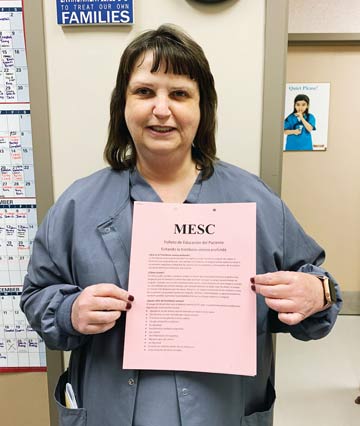A 4-year-old boy breaks his elbow and the trauma results in a blocked artery. The Spanish-speaking family sees an English-speaking orthopod who sets the fracture, but complications ensue, resulting in the removal of some of the arm's muscle tissue. An investigation determines that for all the surgical procedures, the surgeon provided an informed consent in English only and failed to use an interpreter. The case settles for $650,000.
A hospital radiology department finds a mass on a Spanish-speaking patient's left kidney, but the surgeon misreads the reports and proffers an informed consent in English for the right kidney instead. No interpreter is summoned, the patient loses both kidneys and ends up on dialysis for the rest of his life. The case settles for an undisclosed sum.
A 59-year-old Egyptian woman who speaks no English undergoes a urologic procedure. The surgeon removes her kidney, but blood loss leads to hemorrhagic shock, heart failure and death. An investigation determines that hospital employees had been unable to identify the patient's language, so they presented the Conditions of Admission in English without translation or a translator. The informed consent they presented, also in English, failed to mention the possibility of nephrectomy. The case settles for just under $100,000.1
Every day, miscommunications occur between healthcare providers and patients who don't speak English well or at all. Many patients suffer and some even die as a result. Miscommunication is also expensive to facilities and providers. Patients with limited English proficiency (LEP) have longer lengths of stay than English-speaking patients, no matter their socioeconomic status.(2-4) They also have a significantly higher risk of 30-day readmission. When they encounter facilities that are not accommodating, they are likely to rate their satisfaction as low. And they may even sue. According to one study, 1 in 40 malpractice cases is directly related to poor or non-existent interpretation services.1
The challenge of language barriers is of increasing concern. One in five U.S. residents speaks a language other than English at home and 40% of that group does not speak English well enough to effectively communicate with a healthcare provider.
As a percentage of American residents, non-English speakers have been on the rise for more than 30 years. One reason is that Congress loosened immigration laws in the 1960s. Globalization is another factor; people outside of the U.S. are more willing than ever to travel here for education and careers. Wars and civil conflict as well as the climate change that is occurring is Central America are also driving people out of their native countries and making them refugees. International law requires all countries to consider residency or citizenship for immigrants claiming refugee status.
Although the prevailing rhetoric right now doesn't indicate it, demand from the host countries also drives immigration. Every first-world country is dependent on immigrant labor. Immigrants take jobs native-born residents won't do. They're also important net contributors to health insurance. In fact, immigrants (most of them non-citizens) contribute a net surplus of more than $15 billion per year to Medicare. They pay in, but typically do not consume health services at the same rate natives do. The idea that immigrants are a drain on our healthcare financing system could not be more wrong; immigrants subsidize our healthcare system and deserve the best we have to offer.5
Finally, bridging language barriers is also our legal responsibility; U.S. law requires healthcare facilities to provide interpreter services to patients with LEP.6 Facilities must "take reasonable steps" like oral or written translation to provide LEP patients "meaningful access." The translation has to be free and high quality; facilities may not rely on unqualified staff to translate. Facilities must also post patients' rights in the 15 top languages of their states. With all that in mind, here are 9 tips for negotiating language barriers.
.svg?sfvrsn=be606e78_3)

.svg?sfvrsn=56b2f850_5)